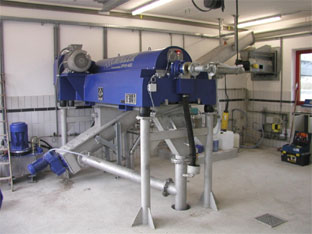Industrial Wastewater Treatment
Industrial wastewater treatment plants are designed to meet pretreatment water requirements prior to downstream WWTP municipal facilities and / or produce clean, safe water for direct discharge within the required limits. As the requirements for cleaner discharge waters increase so does the sophistication of industrial treatment processes being designed and built today. And, decanter centrifuges are being extensively used more and more for liquid- solid separation, sludge dewatering, and sludge thickening applications as part of these pretreatment and / or full treatment operations.
These wastewater applications cover a wide range of processes found in industries such as:
- Agricultural processing
- Chemical processing
- Food processing and wastewater processes
- Industrial manufacturing processes
- Meat packing and rendering
- Mining
- Paper processing
- Potato and root crop processing
- Steel production
- and many more
The Hiller range of DecaPress DP decanter centrifuges are ideally designed for these applications and provide world-class performance on a variety of municipal and industrial wastewater treatment plant applications. Whether your wastewater treatment facility requires liquid-solid separation, dewatering of municipal and industrial sludges, or thickening of biological sludges, the Hiller decanter centrifuge series has been developed for a wide range of potential uses, feed concentrations and equally wide range of feed capacities. The decanter centrifuges are extremely versatile and can be used for most types of liquid/solid separation dewatering slurries to a high level of sludge cake dryness. It can be used for the classification of solids in liquid suspension or for the clarification of liquids and recovery of valuable solids.

- Reduces total disposal volume by as much as 70%+
- Produces stackable cake like sludges with no free liquid
- Reduces handling costs
- Increases options for sludge disposal
- Totally enclosed for odor minimization
- Fully automated equipment operation with minimal operator attention required
- Low maintenance
- Continuous operation
- Space saving: Small equipment footprint
Top of Page
